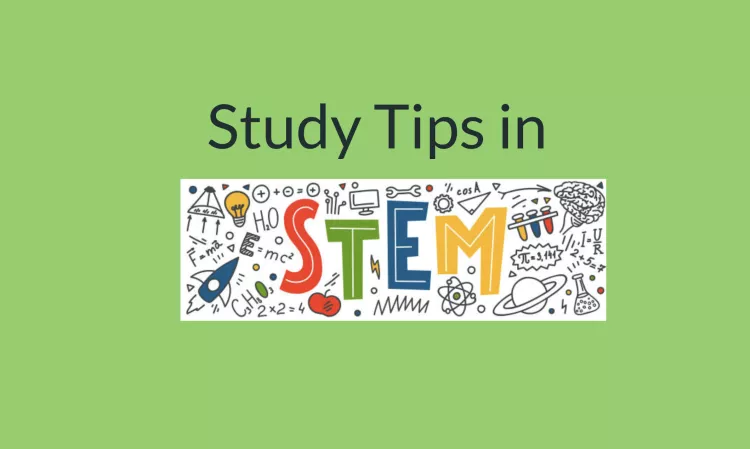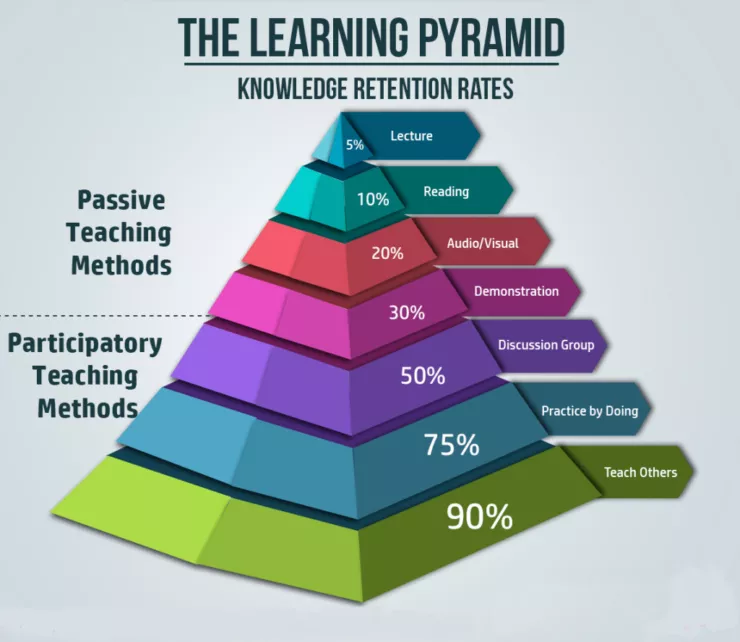Study Tips

How Can You Study Effectively and Efficiently?
This page offers tips and resources to help you organize your time and develop the best studying strategies. We also want to recognize that STEM classes aren't the only classes you have to worry about. While this information is given with STEM classes in mind, a lot can be applied to all coursework.
It's important to give yourself grace when it comes to coursework. Finding a balance between work and rest is extremely important! Don't be too hard on yourself when things don't go according to plan, and give yourself margin when setting up a study plan.
More strategies and resources for time management can be found on the Office of Academic Success homepage. Seek out support if you need it!

Learn more by visiting the Study Tips in Stem Google Slides presentation
The Keys to Effective Studying
- Make a goal to work for a reasonable amount of time at once.
- How long does it take you to get into the groove?
- What motivates you to do work?
- Are you allowing transition time to get to your next appointment?
- Pick a space with reduced distractions.
- Do you like background chatter? → Cornell 1st floor and basement, McCabe 1st floor, Parrish Parlors/Shane Lounge, dorm room common areas, etc.
- Do you prefer working in silence? → McCabe basement, 2nd and 3rd floor; Cornell 2nd floor; your dorm room; a secluded lawn chair, etc.
- Can you focus with friends around you?
- Will working outside boost your mood and motivate you? Or, will you get more distracted being outside?
- Will listening to music help you focus or distract you?
- Tip: Try listening to instrumental music or white noise if music with words distracts you.
- Take breaks at appropriate intervals.
- Pomodoro Technique:
- Work for 25 minutes, then take a five-minute break.
- Work for 50 minutes, then take a ten-minute break.
- Put away your phone until your break time!
- During your break:
- Get a snack.
- Do a quick exercise.
- Take a brief walk.
- Talk to a friend.
- Pomodoro Technique:
- Focus on one subject at a time.
- Make a list to break up your tasks so it isn’t overwhelming.
- Spend time studying with others AND by yourself.
- Collaboration is an important resource, but you also need to understand the material on your own.
- Identify gaps in your own understanding, and fill them by asking questions to your peers, teaching assistants, or professors!
- Be realistic!
- Don’t be too hard on yourself if you don’t follow your plan exactly.
- You’ll learn how to make more manageable goals and time estimates for assignments as you get into the flow of things.
- The process and general principle are more important than the exactly correct answer.
The Learning Pyramid
The further down the pyramid, the more likely learners are likely to retain information. These are just general trends, and it doesn’t mean that the other methods aren’t useful. However, some form of participatory learning is essential to understanding class material, including discussion groups (i.e., departmental problem sessions or office hours), practice by doing (labs, using models) and teaching others (forming study groups or becoming a peer assistant yourself after taking the class).
This article does a good job explaining the value of each learning method, while also explaining why some methods are generally more effective. For example, lectures can be very helpful for some learners, especially if they come prepared to class, are engaged, and take good notes in their own words, rather than copying word for word. However, teaching and discussing concepts with other peers is the most effective way to solidify one’s knowledge.

The Learning Pyramid Infographic. Learn more by visiting tofasakademi (external website)
The Learning Pyramid
Below are the knowledge retention rates of different teaching methods.
| rentention RATE | teaching METHOD |
|---|---|
| 5% | Lecture (Passive Teaching Method) |
| 10% | Reading (Passive Teaching Method) |
| 20% | Audio/Visual (Passive Teaching Method) |
| 30% | Demonstration (Passive Teaching Method) |
| 50% | Discussion Group (Participatory Teaching Method) |
| 75% | Practice by Doing (Participatory Teaching Method) |
| 90% | Teach Others (Participatory Teaching Method) |
STEM Knowledge is often:
- Hierarchical: Course content builds on earlier courses, especially when classes are prerequisite for other classes.
- Cumulative: Content learned at the beginning of the semester is often crucial to understanding later concepts in the course.
- Integrated: There are multiple modes and scenarios in which course content needs to be applied (such as homework assignments, exams, labs, real-world examples)
- Complex: Concepts can often be broken down into smaller more manageable chunks, so it doesn’t feel overwhelming.
- Some metaphors:
- Think of owning your STEM knowledge, so that it can be used later, rather than only renting your knowledge temporarily.
- Think about learning STEM as if it were a foreign language. You need to use vocabulary, context, practice, writing/reading, speaking/listening in order to become more fluent.
- Taking a STEM course is like driving a car: The content is the vehicle, the professor is the navigator, and the student is the driver!
Note-taking:
- Hand-writing notes is a more effective way to remember information.
- People who write notes on their laptops tend to transcribe what they’re hearing without really thinking about what they’re writing.
- Writing is slower, but makes the student think more about what is priority to write down, and in a way that makes logical sense to them specifically.
Exams and Quizzes:
- Reviewing a graded exam:
- What was the reason for getting an incorrect answer?
- Was it incorrect information or just not enough information?
- Why did you understand how to do a particular question? Can you identify study sources that helped you in getting questions right?
- What skills are utilized when answering specific questions?
- The more ways you learn to apply the same information, the more prepared you will be to answer exam questions.
- What was the reason for getting an incorrect answer?



